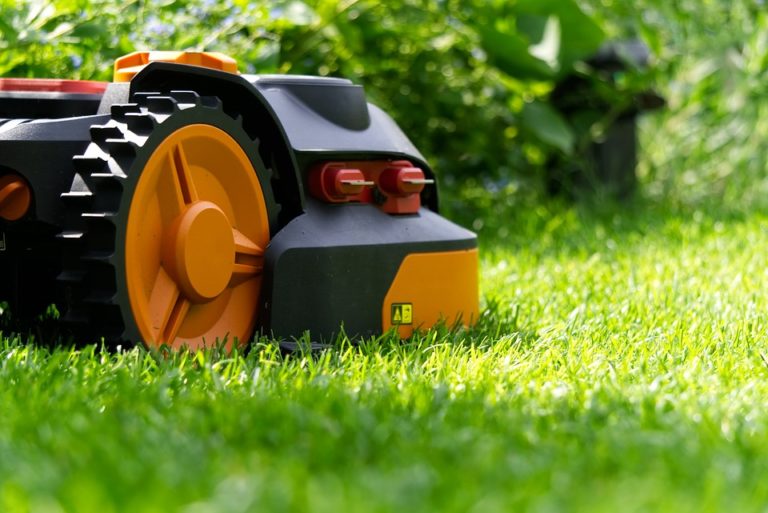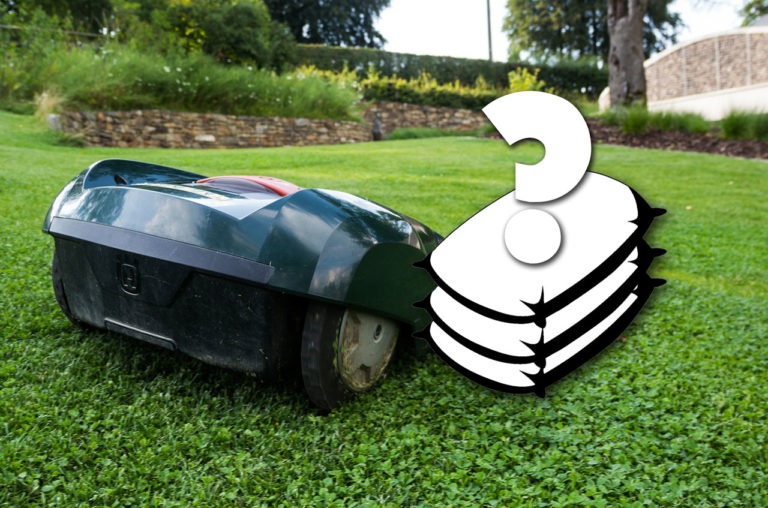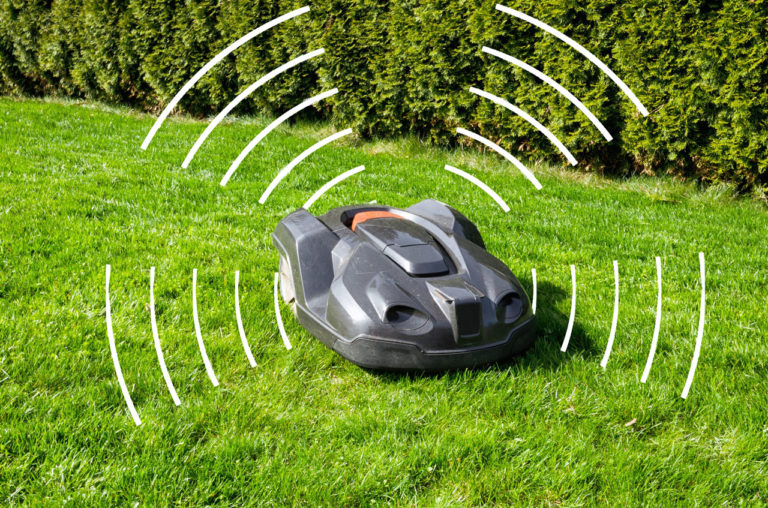Do you have a lawn with an underground garage underneath and are trying to run a robotic mower on your lawn? Then you may encounter certain problems. It is possible that the robotic mower is disturbed by the reinforced concrete of your underground car park. For example, it simply stops because it no longer has a signal. But what do you do if you have this problem?
What is the solution if the robotic mower is disturbed by an underground car park? The issue of robotic mowers being disturbed by an underground car park located under the lawn can be addressed in different ways:
- Laying auxiliary loops for signal amplification
- Exclusion of problem areas with islands
- Laying the boundary wire twice
- Using a robotic mower with a stronger signal
- Amplify the signal or use other boundary wire
- Use of a robotic mower without boundary wire
But how exactly does the problem actually arise and how do the individual possible solutions work? You can find out here in my article.
Contents
This is the problem with reinforced concrete underground garages and robotic mowers
Robotic mowers use a boundary wire with magnetic field
Almost all robotic mowers need a so-called boundary wire to find their way around the lawn. I have already explained how it works in this article.
In short, it is a conductive cable that is laid completely around the mowing area from the charging station of the robotic mower. The cable provides a boundary for the area and the robotic mower cannot move past the cable.
Since the cable is under a weak current, it generates a magnetic field, also called induction field, which the robotic mower can perceive with special sensors. As soon as it crosses the boundary wire, this field changes or the polarity turns around and the robotic mower knows that it is no longer inside the mowing area.
Some robotic mowers also use a guide wire, which works on a similar principle, but is intended to support navigation, not serve as a limitation.
Without an induction field the robotic mower will not drive
To prevent the robotic mower from simply driving over the boundary wire in the event of a power failure or cable break (without power the induction field is also gone), many robotic mowers have a safety system in place.
In fact, the robotic mower continuously checks during its work whether the induction field of the boundary wire can still be detected. The induction field of the boundary wire extends very far and can be measured by the robotic mower under normal circumstances even while in the middle of your lawn.
As soon as this field fails, the robotic mower stops and reports the error message “no signal”, or something similar. This prevents the robotic mower from simply mowing the neighbor’s flowers if for some reason no more current flows through the boundary wire.
Metals disturb the induction field
Unfortunately, however, it is the case that metallic materials can disturb the induction field. Any kind of metal in the ground can cause the induction field to weaken. As a result, the robotic mower may no longer perceive an induction field at certain points on your lawn and stop, with the error message “No signal”.
But one cannot say in general that this happens in the case of all underground parking garages. There are also many reports of robotic mower owners who operate their robotic mower on a lawn above an underground parking garage without encountering any problems.
Whether or not an underground garage becomes problematic for the robotic mower depends on the steel used, the sealing of the garage and the thickness of the layer of soil above.
In addition, the different robotic mower models are differently “susceptible” to this problem. Some robotic mowers or their boundary cables generate a much stronger induction field than others.
But what can you do if you have the problem? Here I present you with five possible solutions:
Solution 1: Laying auxiliary loops for signal amplification
If the problem only occurs in a few places on your lawn, you can use the following trick: Lay the cable from the edge towards the middle of the problem area, similar to creating an island. Then lead it parallel back to the edge.
In the middle of the problem area you leave some space between the two cables. 2 inches should be enough. While the two magnetic fields of the back and forth running cable cancel each other out if the cables are directly next to each other, they do not if you leave a small gap.
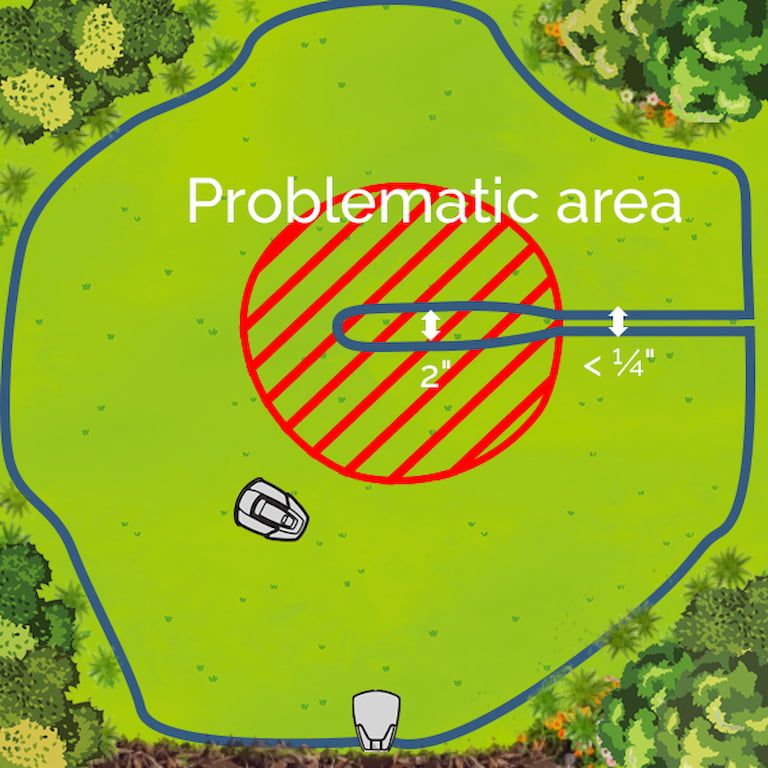
The robotic mower can only drive over the cables where they are directly next to each other. Where they have a small distance between them, it cannot drive over them. At the same time, however, a magnetic field is generated there that does not cancel itself out, and it “covers” the problem area of your lawn within a certain radius.
As the distance of 2 inches is still quite small, the robotic mower can still mow the entire lawn, even if it is located within the “mini-island”.
Solution 2: Exclude the problem areas using islands
If the above solution does not help, there is also the possibility to create a real island. However, the robotic mower will not mow the excluded area. You will have to mow it yourself or use the area for other purposes (e.g. create an island of flowers). At least the robotic mower will not stop, because it cannot drive into the excluded problem area anymore.
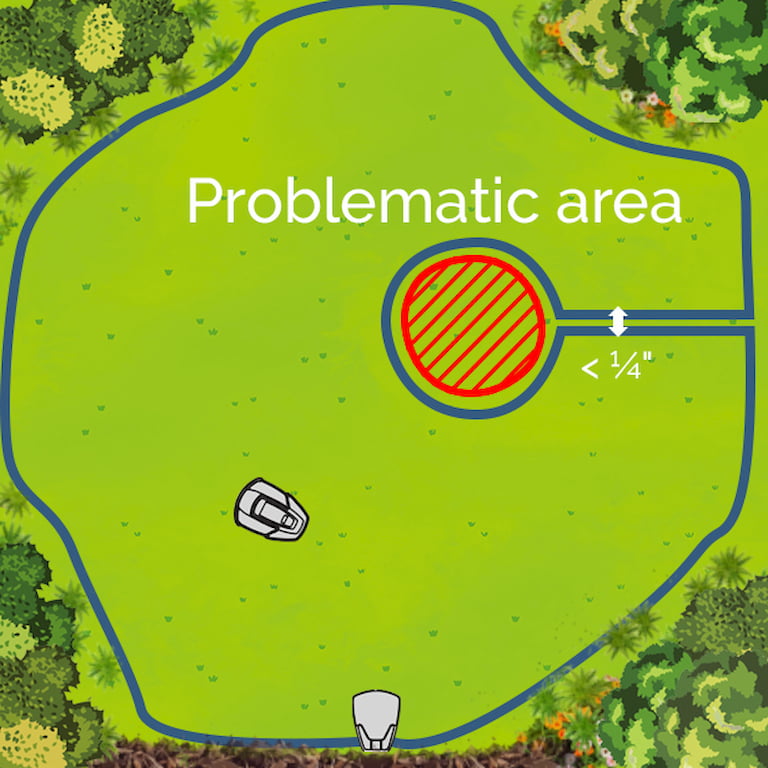
Here‘s that article again, explaining how you create islands. In short, you bend the boundary wire from the outer edge towards the problem area. There you lay it around the problem area and then lead it back parallel to the incoming wire.
The wire running back and forth must be very close together, because only then the robotic mower can pass over the connection between the island and the edge (the induction fields of the cables are then extinguished).
Solution 3: Double the boundary wire
A user who had a similar problem and with whom I discussed possible solutions had the idea to lay the boundary cable twice in the area of her underground car park and thus to strengthen the induction field. This way the robotic mower still gets the signal of the boundary wire despite the interfering reinforced concrete in the ground.
This approach has worked for her. I don’t know of any other example where this has been tried as a solution to a problem. If you try this solution for yourself, please write in the comments below if it works for you. I would be interested to know!
Solution 4: Use a robotic mower with a stronger signal
Another possible solution is to use a robotic mower whose boundary wire emits a stronger signal. Of course, this is especially useful if you have not yet decided on a model.
Robotic mowers with above-average boundary wire signals are those from HONDA. You should, in any case, have the opportunity to test first whether it works at all with the device.
Anyway, if you have an underground garage under your lawn, I would recommend that you always do a test run with a device first and see if you can somehow get the robotic mower to run and fix any problems that may occur.
Solution 5: Amplify the signal or use other boundary wire
There are special cable signal amplifiers for some robotic mower models that you can connect in between. This allows you to amplify the signal of the boundary wire as well and thus possibly cover the “dead spots” in your lawn where the robotic mower would otherwise stop.
Another alternative is to use a thicker boundary wire with better conductivity. The strength of the signal also depends on the resistance of the cable. The greater the resistance of the cable, the more the current is attenuated over the length of the cable.
So the further away a point in the cable is from the power source, the weaker the current is here and the weaker the induction field. This is also the reason why robotic mowers with very high area output usually use thicker cables with a different alloy. Here the current must flow through a much longer cable and at the same time send a strong signal that reaches the middle of a very large area.
So you can try to lay another boundary wire in your lawn that has a lower resistance, thus conducting the current better and providing a stronger induction field.
Solution 6: Robotic mower without boundary wire
If none of the other 5 solutions help, you still have the option of using a robotic mower without a boundary wire. These robotic mowers work slightly differently than most of their contemporaries. Instead of a boundary wire that limits the area, they have a lawn sensor that tells them where the lawn stops.
This has the advantage that you do not have to lay a boundary wire and the robotic mower does not depend on a signal through the boundary wire. But it also has the disadvantage that you cannot easily separate one lawn from the neighboring lawn without building a kind of barrier or laying lawn edging stones, since the robotic mower cannot “know” where your lawn ends and another begins.
But such a robotic mower will at least not have a problem with underground garages. They also work very well on roof terraces, where other robotic mowers have problems.
All further advantages and disadvantages of robotic mowers without a boundary wire compared to those with a boundary wire you will learn in this article.
How did you like my article? Do you have any more questions? Feel free to let me know in the comments below.
Related questions
How does the boundary wire work? The boundary wire is laid once around the entire area being mowed. It begins and ends in the loading station of the robotic mower. This sends a weak current through the cable, which causes the boundary wire to generate an induction field that enables the robotic mower to reliably detect the boundaries of the mowing area.
Also interesting: Robotic mower boundary wire: function explained in detail
How is an island created with the robotic mower boundary wire? An island can be created with the boundary wire of the robotic mower in order to limit specific areas such as an island of flowers or a tree. To do this, the boundary wire is lifted from the edge and guided around the area. It is then led back again parallel and very close to the cable leading to the island.
Also interesting: Creating islands for robotic mowers: Manual with graphics
